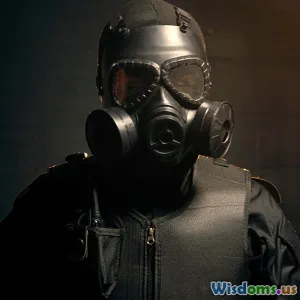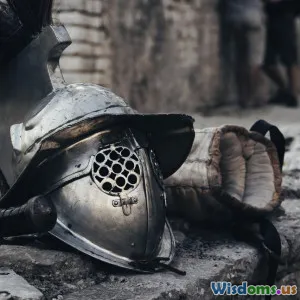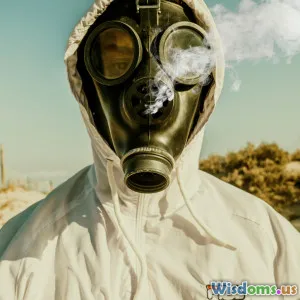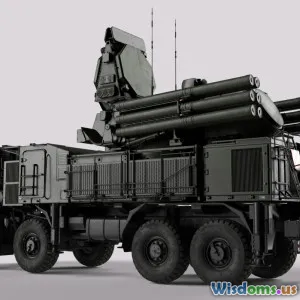
Are Civilian Body Armors as Safe as Military Grade
17 min read Uncover the differences between civilian and military body armor, examining safety standards, materials, regulations, and real-world performance to determine if civilian protection matches military-grade safety. (0 Reviews)
Are Civilian Body Armors as Safe as Military Grade?
The moment we think about body armor, images flash through our minds—soldiers in tough, rugged gear trudging through dangerous terrain, or perhaps a police officer donning a ballistic vest on patrol. But with growing concerns about personal safety and an expanding civilian market for protection, a critical question emerges: Are civilian body armors as safe as their military-grade counterparts? Is a vest available for online purchase as protective as those trusted by troops on the battlefield?
In this deep dive, we peel back the fabric—literally and figuratively—on what differentiates civilian and military-grade body armor. We’ll consider standards, regulations, materials, real-world scenarios, and expert insights to truly assess how “safe” civilian armor is in comparison.
Understanding Body Armor: The Basics
What is Body Armor and How Does It Work?
At its core, body armor is personal protective equipment designed to absorb and reduce the impact from bullets, shrapnel, and other projectiles. Body armor commonly falls into two categories:
- Soft Armor: Flexible materials, designed to stop handgun rounds.
- Hard Armor: Plates made typically from ceramic, steel, or polyethylene, designed to prevent rifle rounds or high-velocity ammunition.
The principle is simple: spread the force of the projectile across a wider area, decreasing penetration and potentially saving lives. But the actual protection offered depends on many nuances—especially the standards behind certification.
Safety Correlates with Standards
Different agencies certify armor based on testing protocols. In the United States, the most prominent certification is the National Institute of Justice (NIJ) standard. Armor without such certification could range from unreliable to outright dangerous.
Military armor undergoes distinct testing and is designed for a broader spectrum of threats. It is vital to understand what "grade" means before comparing safety.
Civilian vs Military Body Armor: Key Differences
Regulatory Landscape
Civilian Body Armor
Civilian access to body armor is largely governed by federal and state laws. Generally, law-abiding civilians can purchase most types of soft armor with relative ease. Certain states (e.g., Connecticut, New York) have more restrictions, especially for "body armor plates" accompanying soft vests.
Civilian armor is primarily made for defense against common threats: handgun rounds and lower-energy projectiles. This tailoring matches the typical risk civilians might face—from criminal activity to occupational hazard.
Military Body Armor
Military body armor isn't just a tougher version of civilian models; it's a leap ahead. Designed for battlefield environments, military-grade armor—like the U.S. Army’s Improved Outer Tactical Vest (IOTV) or the Modular Scalable Vest (MSV)—undergoes rigorous tests against rifle rounds, high-velocity fragmentation, and multi-hit scenarios.
There are legal boundaries for civilians buying true military armor. Export and import controls, federal laws, and proprietary manufacturing often limit military-grade body armor to armed forces and select law enforcement.
“Military-grade armor is issued with special threat protection in mind—armor tailored for threats geographical and technological in nature,” says Dr. Jefferson Brown, a ballistic materials specialist at Johns Hopkins University.
Safety Standards: NIJ Levels and Beyond
Understanding NIJ Levels
In the United States, the NIJ sets benchmarks for ballistic resistance. NIJ standards are adopted widely by civilian-market manufacturers, offering levels including:
- Level II/IIA: Designed to stop common handgun rounds (.357 Magnum, 9mm).
- Level IIIA: Stops higher-velocity handgun rounds such as .44 Magnum.
- Level III: Tested to stop 7.62mm NATO FMJ rifle rounds—achieved with hard armor plates.
- Level IV: Stops armor-piercing rifles rounds (like .30-06 M2 AP).
Most civilian armor available for purchase does not typically extend into Level IV classification, though options exist.
Military Standards
Military standards, often classified, go beyond NIJ testing. They usually mandate multi-hit capability, blunt force protection, and performance metrics facing multiples of projectile types—sometimes in battlefield conditions (dust, moisture, temperature variations).
Example: SAPI and ESAPI Plates
- SAPI (Small Arms Protective Insert): Ceramic plates used historically by U.S. troops for stopping 7.62mm rounds.
- ESAPI (Enhanced SAPI): Advanced, heavier-duty version stopping even more potent rounds.
Military specifications demand higher thresholds for multiple hits, and these requirements typically exceed civilian certification.
Material Science: Building Blocks of Protection
What Goes Into Civilian Armor?
Civilian armors rely heavily on tested materials like Kevlar®, Dyneema®, and layered aramid fibers. These are woven into vests, creating a lightweight, comfortable, and concealable product ideal for private security, law enforcement, and daily wear.
- Soft armor is meant for everyday threats—stopping handgun ammunition (think .38 special, 9mm).
- Lightweight polymers have made Level III+ armor reasonably attainable for civilians wanting rifle protection.
What Sets Military-Grade Apart?
Military-grade armor introduces heavy ceramics, reinforced composites, and polyethylene hybrids. Ceramics, for example, crush the bullet on impact, spreading energy across a backing of aramid fibers.
- Ceramic Plates: Dramatically increase stopping power, particularly versus rifle rounds.
- Composite Plates: Layered for multiple-hit resistance, they balance protection with weight for maneuverability.
During the Iraq and Afghanistan conflicts, the integration of ESAPI plates reduced fatal torso injuries from over 30% to under 15% for U.S. troops (Source: US Army Institute of Surgical Research 2011).
Custom Features and Fit
Military armor is modular, often incorporating side plates, neck protection, groin guards, and even built-in communication or hydrating devices. Civilian armor usually omits such features for discretion and ease.
Real-World Scenarios: Performance in Action
Civilian Armor in Use
Consider a notorious high-profile incident: the 1997 North Hollywood shootout. Two armed bank robbers confront Los Angeles police while clad in homemade and modified soft/hard armor hybrids. While not equivalent to military-grade, their armor greatly extended the duration of the event and highlighted how protective gear mismatched to threat level (in this case, police handguns against their makeshift armor) challenges responders.
Private security firms, cash transport guards, and undercover officers report hundreds of "saves" yearly due to soft armor stopping handguns. For example, an NIJ Level II vest saved a Houston patrol officer when struck by a .40-caliber round in 2021 (Departmental report).
However, most violent confrontations involving rifles can overmatch standard civilian gear. The FBI’s Uniform Crime Reporting (UCR) Program found that of all law enforcement officer deaths by firearm (2011-2021), about 35% involved rifle rounds which basic soft armor cannot stop.
Military Armor: Combat Proven
When it comes to battlefield protection, military armor has evolved continually in response to emerging threats:
- In conflict zones, U.S. and British soldiers credit improved body armor systems for significant reductions in torso-related combat fatalities. A New England Journal of Medicine 2012 article noted that advances from SAPI to ESAPI plates, plus soft vest upgrades, doubled survivability over a decade.
- The integration of side and deltoid protection means fewer survivable injuries turn fatal, even against high-fragmentation blasts.
A Key Limitation: Weight vs. Mobility
Superior protection comes at a price. Military armor, especially with full load-outs, can weigh upwards of 40 pounds (18 kilograms) for chest, back, sides, and auxiliary plates. This is a tactical compromise: better coverage often means less speed.
Civilians, prioritizing comfort and concealment, often choose lighter options—accepting less-than-maximum protection for day-to-day use.
Legal, Ethical, and Societal Factors
Access and Ownership
- Durable NIJ certified vests (up to Level IIIA) are legal in most places and available to most adults without a criminal background.
- Hard armor (Level III/IV) faces purchase scrutiny; some states ban their sale to non-law-enforcement.
Military armor plates, especially surplus ESAPI types, are highly restricted or sold "out-of-standard"—they may have expired, been damaged, or repurposed, meaning the performance is uncertain in life-or-death situations.
The "Gray Market" Dilemma
Unfortunately, a cottage industry of untested imports claim to be "military-grade." Many lack certification, and results in independent ballistic testing are mixed. Haut and Frost’s 2019 Ballistics Journal study found 45% of imported non-certified products (sold as "Military Grade Mexico/China") failed basic handgun penetration tests.
The best advice: Buy certified, buy from reputable brands, and review documentation.
Societal Implications
Easy access to higher-grade armor has ignited debate: Should civilians wear the same armor as troops? The mass shooter in Dayton, Ohio, 2019 reportedly wore soft armor, though not military grade, complicating police response and fueling policy questions.
Proponents argue: higher-grade armor can save innocent lives in legal self-defense or under threat scenarios. Detractors warn: it could also assist criminal activity or overburden justice system responses.
Comparative Summary: Which is Safer?
Head-to-Head Comparison Table
| Feature | Civilian Armors (Common) | Military-Grade Armors |
|---|---|---|
| Certification | NIJ II/IIIA/III | Military/NIJ III/IV+ |
| Designed to Stop | Handguns/Rifles (limited) | Rifles/AP rounds/Fragments |
| Multi-Hit Capability | Varies | Advanced, multi-hit |
| Features/Accessories | Minimal, slim | Modular, comprehensive |
| Weight (full configuration) | 3–10 lbs (vests and plates) | 40+ lbs (full battle kit) |
| Availability | Legal, moderate restriction | Highly restricted/issued |
| Certification Proof | Certificate/Nij label | Limited, proprietary |
| Cost (approximate) | $250–$1500 | $2000+, not readily sold |
In Short: Military armor is demonstrably safer, but often impractical, illegal, or inaccessible for regular civilian use. For most everyday threats—namely, handguns—high-quality, certified civilian armor provides high confidence of protection. For advanced, multi-hit, high-velocity threats, military armor stands alone.
What Real Safety Looks Like: Expert Advice
- "A civilian who properly assesses their threat and selects certified armor, stores and maintains it properly, can be nearly as well protected as many patrol police officers" – Sandra Hartley, Director of Security Training, Securitas USA.
- "The biggest risk for civilians isn’t ‘not military grade’—it’s buying untested, uncertified, or fake armor that drastically underperforms when it counts" – Dr. Viktor Ivanov, International Ballistics Consortium.
- Civilian armor should be rated for the most probable threat faced. Ready public data (2022, Bureau of Justice Assistance): 93% of gun homicides in the U.S. involved handguns; NIJ IIIA-rated armor covered these risks fully.
Always Prioritize:
- Certification: Insist on NIJ or equivalent ratings; do not trust "military spec" claims without evidence.
- Usage Scenario: Match protection with realistic threats—not extremes.
- Maintenance: Replace armor that has expired, shows damage, or has undergone blunt trauma—regardless of grade.
Conclusion: Making an Informed Choice
Civilian body armors are not as broadly safe as military-grade armor, but they can be supremely effective in shielding against the most likely civilian threats. For those expecting to face rifle-caliber guns, only the highest-rated—and in some cases, legally restricted—armor stands a chance, much like what the armed forces wear.
But ultimate safety goes beyond the armor grade:
- Accurate threat assessment
- Certification verification
- Avoiding counterfeit or “gray-market” products
Educate before you equip. Know what you’re buying, why you’re buying it, and—most vitally—how to maintain and wear it for true protection. Civilian armor, properly selected and cared for, is a proven lifesaver. Attempting to mirror the military without understanding requirements, risks, and regulations is a faux sense of safety at best.
If considering body armor for professional or personal use, always consult with security experts, review the latest NIJ standards, and understand local laws before making a purchasing decision.
For further reading, see the National Institute of Justice Body Armor Guide, and regularly check for recalled or updated standards.
Rate the Post
User Reviews
Popular Posts

















